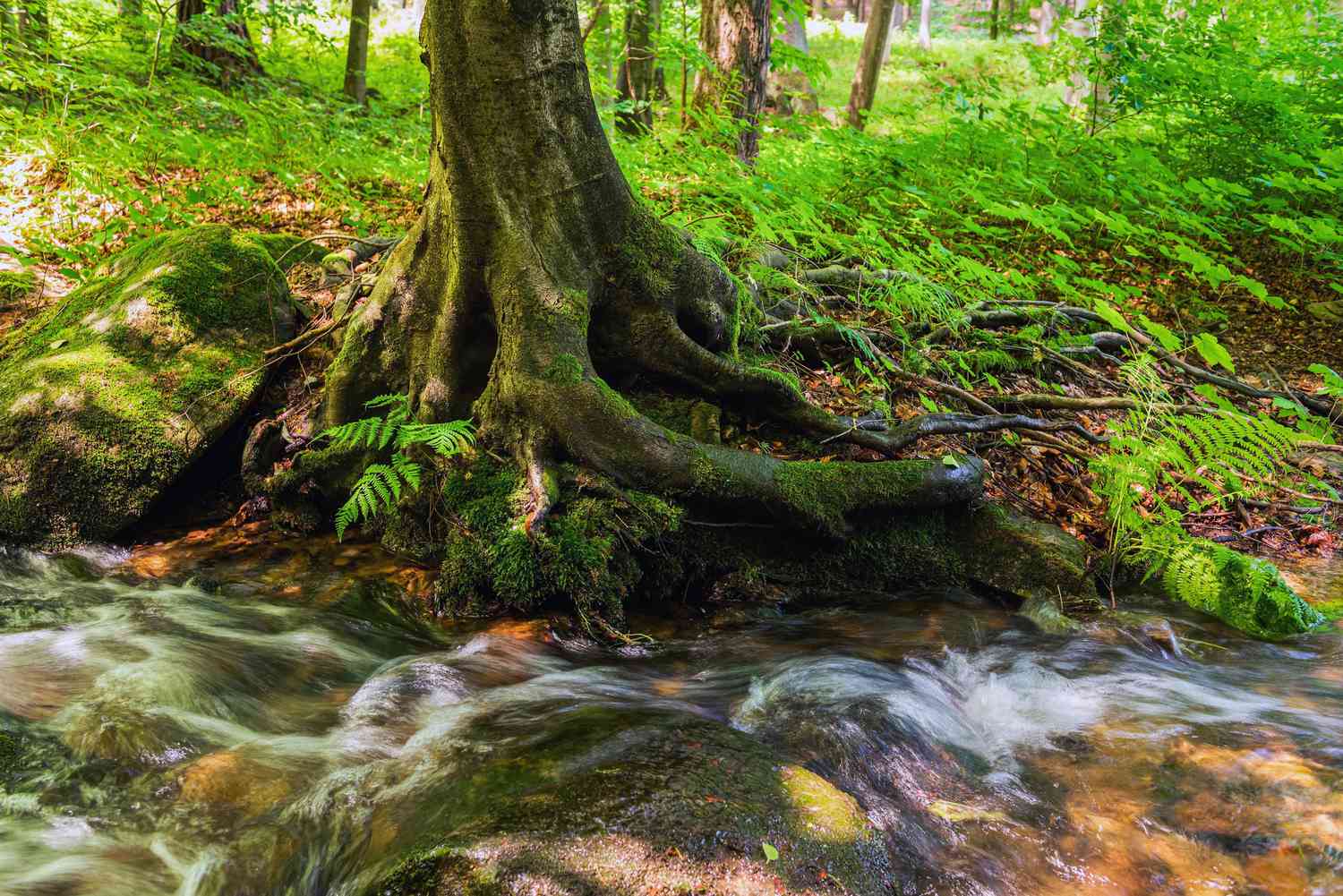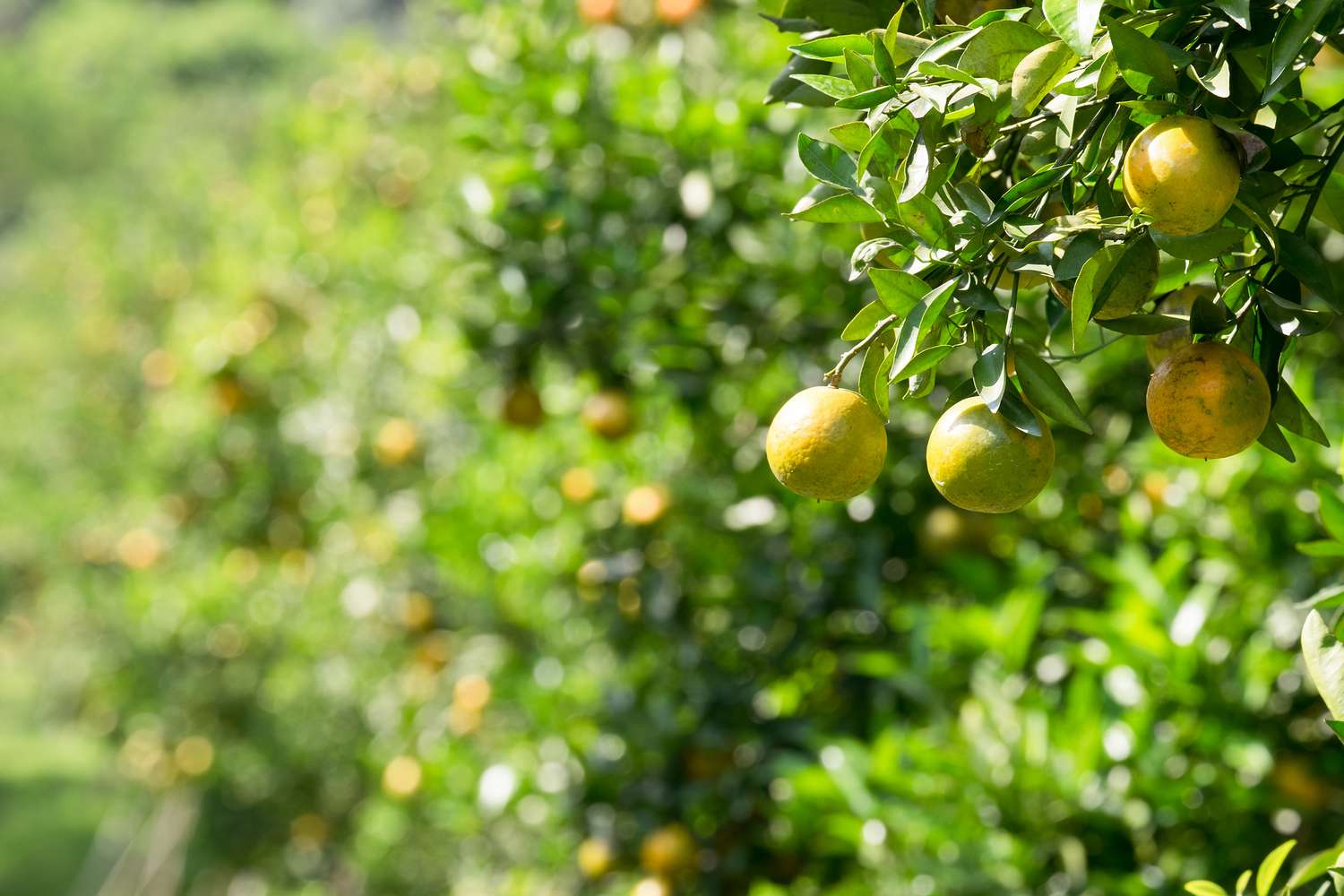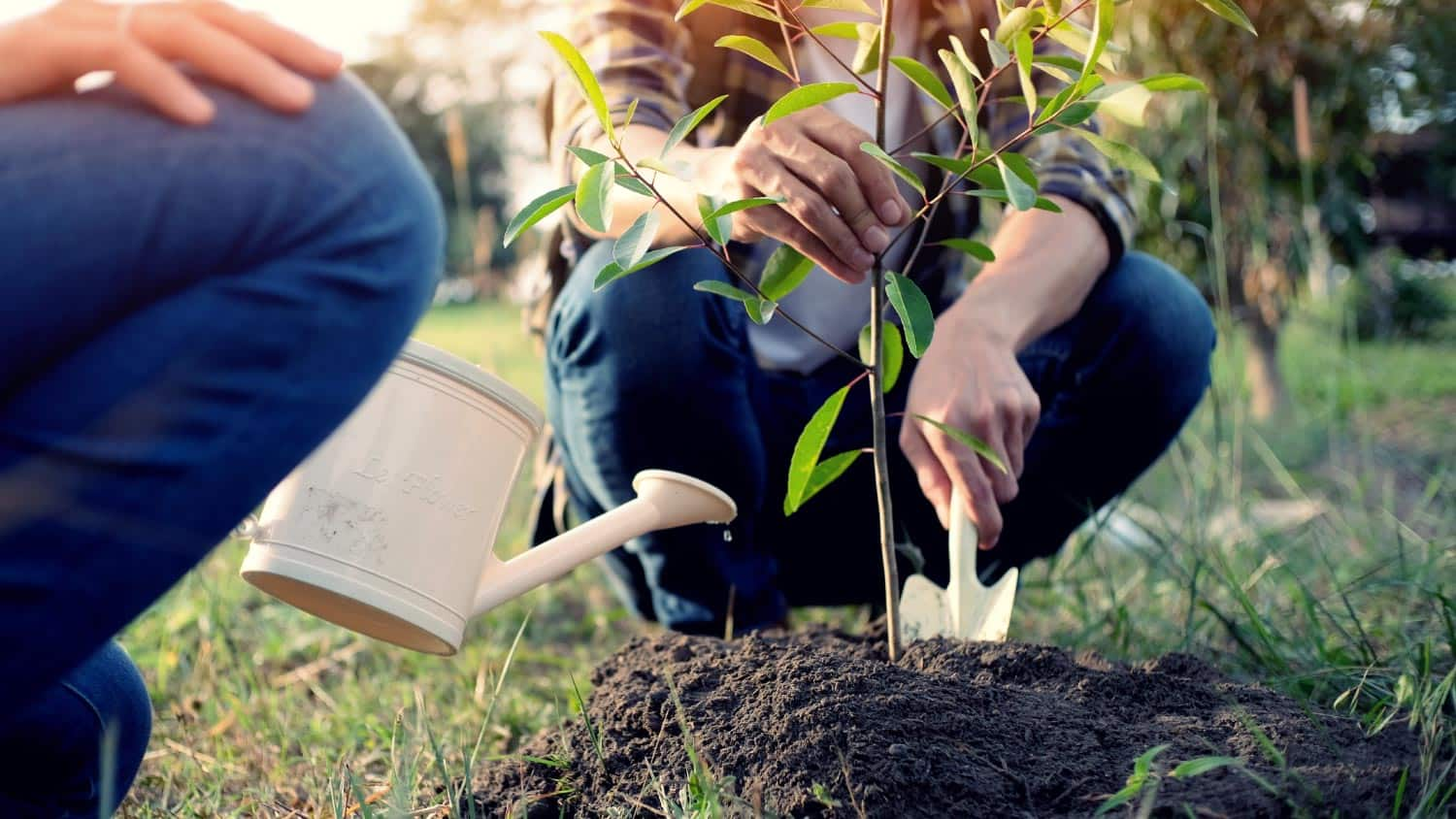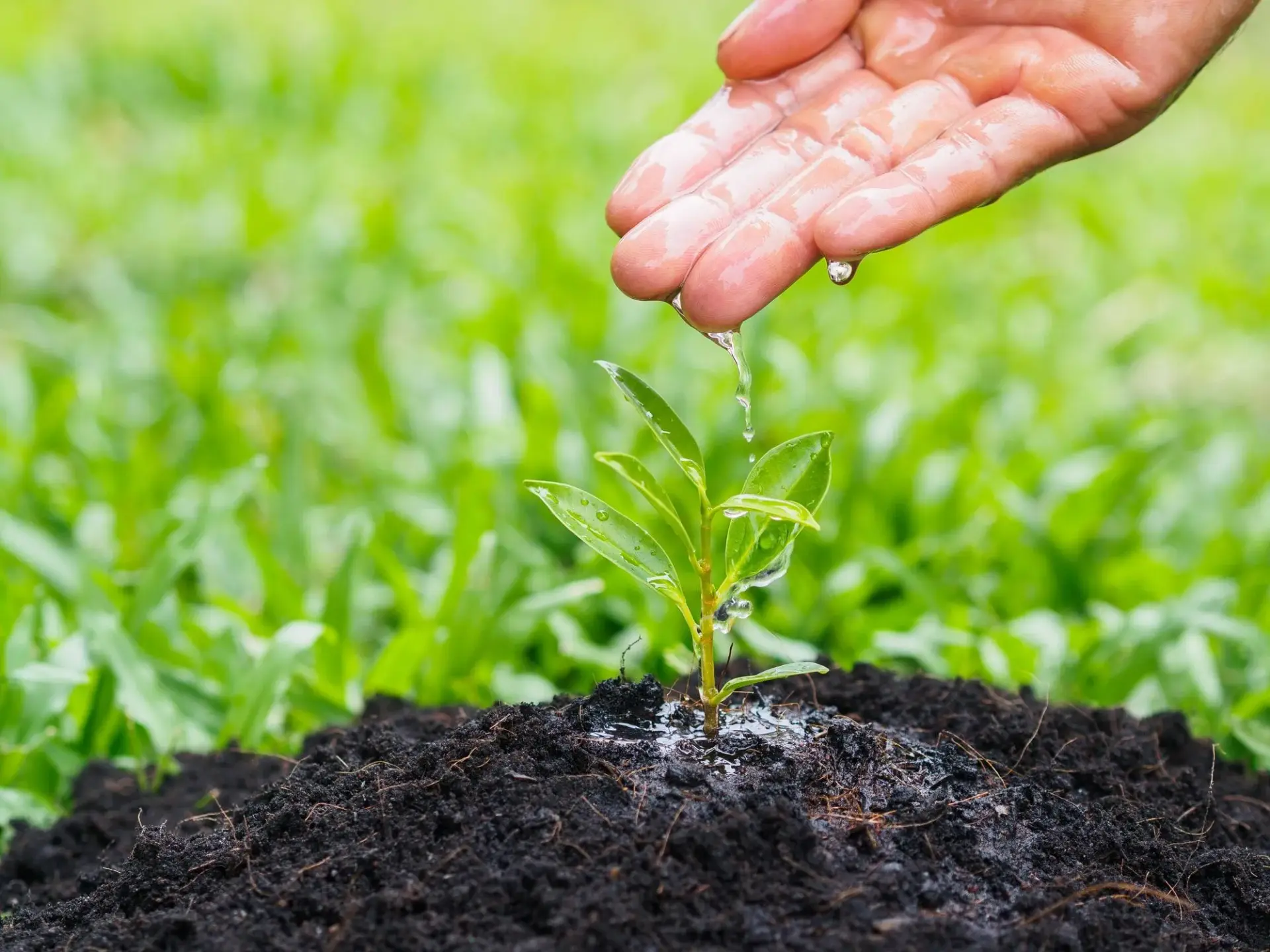Home>Gardening Techniques>Plant Care>How Do Trees Improve Water Quality


Plant Care
How Do Trees Improve Water Quality
Modified: January 22, 2024
Learn how proper plant care and tree maintenance can significantly improve water quality, creating a healthier environment for all. Take steps to preserve natural resources now!
(Many of the links in this article redirect to a specific reviewed product. Your purchase of these products through affiliate links helps to generate commission for Chicagolandgardening.com, at no extra cost. Learn more)
Table of Contents
- Introduction
- Importance of Water Quality
- Role of Trees in Improving Water Quality
- Mechanisms of Tree-Related Water Quality Improvement
- Canopy Interception and Deposition
- Soil Filtration and Nutrient Uptake
- Riparian Buffer Zones
- Tree Species and Water Quality
- Case Studies on Tree-Related Water Quality Improvement
- Conclusion
Introduction
Welcome to our comprehensive guide on how trees can improve water quality. Water is a precious resource that sustains all forms of life on our planet, and its quality plays a vital role in maintaining the health of ecosystems and human populations. However, due to various human activities and natural processes, water sources can become polluted, impacting both the environment and human well-being.
Fortunately, trees offer a natural solution to this problem. Trees not only provide us with oxygen, shade, and beauty, but they also play a significant role in improving water quality. Their intricate root systems, dense vegetation, and unique physiological processes help cleanse and protect water bodies, including rivers, lakes, and underground aquifers.
In this article, we will explore in detail how trees enhance water quality, the mechanisms by which they do so, the importance of tree species selection, and provide real-life case studies that highlight the positive impact of trees on water quality.
Whether you are an environmental enthusiast, a gardener, or simply curious about the wonders of nature, this article will provide you with comprehensive insights into the role trees play in improving water quality.
Importance of Water Quality
Water quality is of utmost importance for both ecological balance and human well-being. Clean and healthy water is essential for the survival of plants, animals, and humans, as it impacts various aspects of life and the environment.
From an ecological standpoint, water bodies support diverse aquatic ecosystems, including fish, amphibians, reptiles, and countless species of invertebrates. These ecosystems rely on clean water to provide food, shelter, and breeding grounds. Polluted water can disrupt these delicate ecosystems, leading to a decline in biodiversity and the loss of species.
Furthermore, water quality directly affects human health. Contaminated water can carry harmful pollutants, such as bacteria, viruses, heavy metals, and chemicals, which can cause a range of waterborne diseases and health issues. Access to clean drinking water is crucial for preventing the spread of diseases and maintaining the well-being of communities.
In addition to its ecological and health implications, water quality also impacts various industries and economic activities. Many industries rely on clean water for manufacturing processes, energy production, and agriculture. Water pollution can lead to significant economic losses and hinder sustainable development.
Given the crucial role that water quality plays in sustaining life and supporting various activities, it is imperative to take proactive measures to improve and protect our water sources. This is where trees come into play.
Trees serve as natural guardians of water quality and can effectively mitigate water pollution through their unique characteristics and ecological functions. Understanding the role of trees in improving water quality can help us appreciate their significance and inspire us to take action in preserving and planting trees in our environments.
Role of Trees in Improving Water Quality
Trees play a crucial role in improving water quality by acting as natural filters and purifiers. They possess various mechanisms and functions that contribute to the improvement of water quality in different ways.
One of the primary roles of trees in enhancing water quality is through their ability to reduce surface runoff. When it rains or snows, trees intercept and absorb a significant amount of water through their leaves, branches, and trunks. This process, known as canopy interception, helps prevent excessive water from directly reaching the ground and carrying pollutants into water bodies. Tree canopies act as natural umbrellas, slowing down the movement of rainwater and reducing the erosive force of runoff.
In addition to canopy interception, trees also contribute to water quality improvement through their root systems. Tree roots create an extensive network underground, which helps stabilize soil and prevent erosion. This, in turn, reduces sediment runoff, a major source of water pollution. The roots also enhance infiltration, allowing water to penetrate the soil more effectively, where pollutants can be naturally filtered and broken down.
Furthermore, trees absorb and uptake nutrients, including nitrogen and phosphorus, through their roots. Excessive amounts of these nutrients in water bodies can lead to eutrophication, causing algae blooms and depleting oxygen levels, resulting in the deterioration of water quality and the death of aquatic organisms. By absorbing and utilizing these nutrients, trees help regulate nutrient levels and prevent the negative consequences of eutrophication.
Riparian buffer zones, or streamside forests, are another essential mechanism by which trees contribute to water quality improvement. Riparian zones act as protective buffers along water bodies, filtering out pollutants, trapping sediments, and reducing nutrient runoff from adjacent areas. The dense vegetation in these zones helps to shade and cool the water, providing a suitable habitat for aquatic species while preventing excessive algae growth.
Moreover, trees have been found to have an effective role in removing contaminants and pollutants from water through a process called phytoremediation. Certain tree species have the ability to absorb and accumulate heavy metals, chemicals, and even organic pollutants through their roots, effectively detoxifying contaminated water.
In summary, trees have multiple roles in improving water quality. They reduce surface runoff through canopy interception, stabilize soil with their root systems, regulate nutrient levels, create riparian buffer zones, and can even aid in the remediation of polluted water. Understanding the various mechanisms by which trees contribute to water quality improvement allows us to recognize their immense value and encourages us to protect and promote tree planting initiatives for a healthier environment.
Mechanisms of Tree-Related Water Quality Improvement
Tree-related water quality improvement involves a variety of mechanisms that work together to cleanse and protect our water sources. Understanding these mechanisms is essential for comprehending the vital role that trees play in enhancing water quality.
One of the key mechanisms is canopy interception and deposition. When it rains, trees intercept rainwater through their leaves, branches, and stems. This interception reduces the amount of water that directly reaches the ground, minimizing the potential for pollutants to be carried into water bodies. Additionally, the leaves and surfaces of trees can act as temporary storage sites for certain pollutants, such as dust, pollen, and airborne particles, preventing them from entering the water system.
The root systems of trees also contribute significantly to water quality improvement. Tree roots act as natural filters, capturing and absorbing harmful substances and pollutants. As water moves through the soil, the roots actively take up nutrients such as nitrogen and phosphorus, preventing them from reaching and polluting water bodies. Furthermore, tree roots create pore spaces in the soil, enhancing infiltration and allowing water to penetrate deeper into the ground. This helps in filtering out pollutants and preventing surface runoff from carrying contaminants into water sources.
Riparian buffer zones are another critical mechanism that trees provide for water quality improvement. These buffer zones consist of trees and vegetation located alongside streams, rivers, and other water bodies. The dense vegetation in these areas helps reduce the speed of water flow, allowing more time for particle settling and sedimentation. The plants also trap and retain sediments, preventing them from reaching the water and causing turbidity. Riparian buffer zones act as a natural barrier, filtering out pollutants and preventing them from entering the water system.
In addition to the physical mechanisms, trees also enhance water quality through their physiological processes. Through a process known as transpiration, trees release water vapor into the atmosphere. This helps regulate the water cycle and maintain a proper balance of moisture in the environment. By participating in the water cycle, trees contribute to diluting pollutants and reducing their concentration in water bodies.
Furthermore, certain tree species possess unique capabilities for phytoremediation, the ability to absorb and remove pollutants from water and soil. These trees can accumulate contaminants, such as heavy metals or organic compounds, into their tissues while effectively detoxifying the surrounding environment. Phytoremediation offers a sustainable and eco-friendly approach to addressing water pollution issues.
Overall, the mechanisms by which trees contribute to water quality improvement are diverse and interconnected. Canopy interception, root filtration, riparian buffer zones, physiological processes, and phytoremediation all work in harmony to protect and cleanse our water sources. Understanding these mechanisms emphasizes the importance of tree planting and conservation efforts in safeguarding our water quality for future generations.
Canopy Interception and Deposition
One of the key mechanisms through which trees improve water quality is through canopy interception and deposition. When it rains, trees play a crucial role in intercepting and absorbing rainfall through their leaves, branches, and trunks, before it reaches the ground level.
Canopy interception refers to the process where trees capture rainfall on their surfaces, preventing it from immediately reaching the ground. The shape, size, and density of the leaves and branches determine the amount of rainfall intercepted. The intercepted rainwater can then follow three pathways: evaporation, throughfall, and stemflow.
One pathway is evaporation, where some of the intercepted rainwater evaporates back into the atmosphere due to the heat and energy exchange between the tree surface and the surrounding air. This process helps to conserve water and regulate the overall water balance in the ecosystem.
The second pathway is throughfall, where the intercepted rainwater drips off the leaves, branches, and twigs and falls to the ground beneath the tree canopy. Throughfall contributes to soil moisture replenishment, supporting the growth of understory vegetation, as well as providing water to the microorganisms present in the soil. Additionally, throughfall helps to reduce erosion by allowing the rainwater to enter the soil more gently.
The third pathway is stemflow, which occurs when the intercepted rainwater flows down the branches and trunk towards the base of the tree. Stemflow can transport water and dissolved substances such as nutrients, pollutants, and organic matter from the tree surface to the ground below. This localized flow concentrates the water in a specific area, potentially providing additional moisture for the tree’s root system.
In addition to intercepting and redistributing rainfall, trees also act as temporary storage sites for various pollutants and particles. Dust, pollen, and other airborne pollutants can settle on the surface of leaves and branches, essentially being captured by the tree canopy. This prevents these pollutants from directly entering water bodies and contributes to overall water quality improvement.
The effectiveness of canopy interception in improving water quality is influenced by several factors. The density and structure of the tree canopy, including the leaf area index, play a significant role in determining the amount of rainfall intercepted. The species of the tree, as well as its height and age, can also impact the interception capacity. Additionally, climatic conditions, such as rainfall intensity and duration, can affect the overall efficiency of canopy interception.
Overall, canopy interception and deposition is a vital mechanism by which trees contribute to improving water quality. By intercepting rainfall and redistributing it through evaporation, throughfall, and stemflow, trees help regulate the water cycle, support soil moisture, and reduce the direct entry of pollutants into water bodies. Understanding the significance of canopy interception emphasizes the importance of maintaining and planting trees as natural filters and protectors of our water sources.
Soil Filtration and Nutrient Uptake
Trees play a crucial role in improving water quality through soil filtration and nutrient uptake. Their intricate root systems and unique physiological processes help filter out pollutants and regulate nutrient levels in the soil, preventing them from entering water bodies.
One of the primary functions of tree roots is to anchor the tree in the ground. The extensive network of roots also enhances soil stability and reduces erosion. As water moves through the soil, the roots act as natural filters, trapping and absorbing contaminants and pollutants present in the water. The root system acts as a physical barrier, preventing these pollutants from reaching water bodies and improving overall water quality.
The filtering function of tree roots is particularly effective in removing sediment and particulate matter from water. Sediment runoff from construction sites, agricultural fields, or other disturbed areas can introduce large amounts of particles into water bodies, leading to increased turbidity and reduced water quality. The roots of trees help prevent sediment runoff by stabilizing the soil and creating channels for water to infiltrate, reducing erosion and trapping sediment before it can reach the water.
In addition to soil filtration, trees also play a vital role in nutrient uptake. Nutrients such as nitrogen and phosphorus are essential for plant growth, but their excessive presence in water bodies can lead to eutrophication, a process that causes harmful algal blooms and depletes oxygen levels in water. Trees help regulate nutrient levels by absorbing and utilizing these nutrients through their root systems, preventing their accumulation in water bodies.
The uptake of nutrients by tree roots helps maintain a balance in the surrounding ecosystem. By efficiently taking up nitrogen and phosphorus, trees help reduce the amount of these nutrients available for algae and other aquatic plants. This helps minimize the risk of eutrophication and promotes healthier and more balanced aquatic ecosystems.
Moreover, trees contribute to the cycling of nutrients in the soil. As leaves and other organic materials from trees decompose, they release nutrients back into the soil, making them available for other plants and organisms. This natural cycling of nutrients helps support the overall health and fertility of the soil, contributing to improved water quality in the long term.
It’s important to note that the effectiveness of soil filtration and nutrient uptake by trees can vary depending on various factors, including tree species, soil conditions, and land management practices. Understanding the specific nutrient requirements and growth characteristics of different tree species is crucial for maximizing their water quality improvement potential. Strategic planting of trees in areas prone to sediment runoff or nutrient pollution can have a significant positive impact on water quality.
In summary, trees play a vital role in improving water quality through soil filtration and nutrient uptake. Their root systems act as natural filters, trapping and absorbing pollutants and sediment, while also regulating nutrient levels to prevent eutrophication. By understanding and harnessing the power of trees, we can work towards preserving and restoring the quality of our water sources for a healthier and sustainable future.
Riparian Buffer Zones
Riparian buffer zones, also known as streamside forests, are essential components of a healthy ecosystem and play a crucial role in improving water quality. These buffer zones consist of vegetation, including trees, shrubs, and grasses, located alongside streams, rivers, and other water bodies. They act as a natural barrier between the land and the water, providing numerous benefits for water quality enhancement.
One of the primary functions of riparian buffer zones is to prevent runoff and erosion. The dense vegetation in these areas helps reduce the speed of water flow, allowing more time for particles to settle and sedimentation to occur. This prevents sediment from entering water bodies, improving water clarity and reducing the harmful effects of sediments on aquatic life.
In addition to reducing sediment runoff, riparian buffer zones also play a vital role in filtering out pollutants. As water moves through the soil within the buffer zone, the roots of trees and other plants act as natural filters, trapping and absorbing pollutants present in the water. Nutrients, pesticides, and other contaminants are captured and retained by the vegetation, preventing their entry into water bodies and improving overall water quality.
Riparian buffer zones also contribute to the stabilization of stream banks. The root systems of trees and other plants help bind the soil together, preventing erosion along the streambanks. This helps maintain the integrity of the stream channel, reducing sedimentation and the release of excessive nutrients into the water.
Another critical function of riparian buffer zones is the regulation of water temperature. The shade provided by the trees helps keep the water temperature cool, which is essential for the survival of many aquatic species. Excessive warming of water can lead to reduced oxygen levels and the loss of sensitive species. By creating a shaded environment, riparian buffer zones contribute to the preservation of a suitable habitat for aquatic life.
Riparian buffer zones also offer an array of additional benefits for the surrounding ecosystem. They provide food and habitat for a diverse range of wildlife, including birds, mammals, and amphibians. The vegetation in these buffer zones also helps absorb excess nutrients and prevents their entry into water bodies, further aiding in the mitigation of eutrophication.
The width and composition of riparian buffer zones depend on various factors, including the size of the water body, the slope of the adjacent land, and local regulations. Ideally, wider buffer zones and a diverse mix of tree species provide more significant benefits for water quality improvement.
Preserving and restoring riparian buffer zones is crucial for maintaining and improving water quality. Efforts should be made to protect existing buffer zones from development and promote the establishment of buffer zones in areas lacking vegetation. Planting trees and plants that are native to the region can enhance the effectiveness of the buffer zone in filtering pollutants and supporting a healthy ecosystem.
Riparian buffer zones exemplify the important role that trees and vegetation play in safeguarding water quality. By functioning as natural filters, preventing erosion, and regulating water temperature, riparian buffer zones contribute to the overall health and well-being of our water bodies and the ecosystems that depend on them.
Tree Species and Water Quality
The selection of tree species has a significant impact on their ability to improve water quality. Different tree species possess unique characteristics and traits that influence their effectiveness in filtering pollutants, stabilizing soil, and regulating nutrients. Choosing the right tree species is crucial for maximizing the positive impact on water quality.
Some tree species are particularly efficient at filtering pollutants and removing sediment from water. Species with dense canopies and large leaves, such as willows (Salix spp.) and poplars (Populus spp.), are excellent choices for areas prone to sediment runoff and erosion. Their extensive root systems also contribute to enhanced soil stability, reducing the amount of sediment that enters water bodies.
Other tree species are known for their ability to regulate nutrient levels in the soil and prevent eutrophication. For example, bald cypress (Taxodium distichum) and red maple (Acer rubrum) are effective at absorbing excess nutrients like nitrogen and phosphorus from water sources. These species can help minimize the negative impacts of nutrient pollution on water quality and maintain a balanced ecosystem.
Riparian buffer zones can benefit greatly from the inclusion of specific tree species. Trees with fibrous root systems, such as black willows (Salix nigra) and boxelder (Acer negundo), help stabilize stream banks and prevent erosion. They are also effective at intercepting and filtering runoff, reducing the entry of pollutants into the water. Incorporating a diverse mix of tree species in riparian buffer zones enhances their overall functionality and improves water quality more effectively.
It is essential to consider the local climate, soil conditions, and site characteristics when selecting tree species for water quality improvement. Native tree species are typically the best choice, as they are well-adapted to the local ecosystem and have evolved to provide maximum benefits for water quality enhancement. Local nurseries and forestry extension services can provide guidance on suitable tree species for specific regions.
In addition to the selection of tree species, proper maintenance and care are crucial for maximizing their water quality improvement potential. Adequate watering, mulching, and protection from pests and diseases are essential to ensure the health and longevity of trees. Regular assessment of tree health and appropriate pruning can help maintain their effectiveness in improving water quality.
Furthermore, community collaboration and participation are essential in promoting tree planting initiatives focused on water quality improvement. Educating communities about the benefits of specific tree species and involving them in tree planting programs can create a sense of ownership and foster a long-term commitment to preserving and protecting water sources.
In summary, tree species selection is a critical factor in enhancing water quality. Choosing species that are efficient at filtering pollutants, stabilizing soil, and regulating nutrients can significantly contribute to the improvement and protection of our water bodies. Proper maintenance and community involvement are integral to maximizing the effectiveness of tree planting initiatives and ensuring long-term water quality improvement.
Case Studies on Tree-Related Water Quality Improvement
Real-life case studies demonstrate the significant impact that trees have on improving water quality in various environments around the world. These examples highlight the critical role of trees in enhancing the health and sustainability of our water sources.
One notable case study comes from the Chesapeake Bay watershed in the United States. The Chesapeake Bay is the largest estuary in the country and is prone to pollution from agricultural runoff and urban development. To address these issues, extensive tree planting initiatives have been implemented along streams and in riparian buffer zones. Studies have shown that these tree plantings have significantly reduced nitrogen and phosphorus runoff and improved overall water quality in the bay. The trees play a crucial role in capturing and filtering pollutants, reducing sedimentation, and providing habitat for a diverse range of wildlife.
An additional case study comes from South Korea, where the government has actively pursued reforestation efforts to improve water quality in the Han River basin. By planting millions of trees, the Han River basin has experienced a reduction in sediment runoff, a decrease in pollutant concentrations, and improved water clarity. The reforestation projects have not only contributed to water quality improvement but also provided recreational opportunities and enhanced the aesthetic appeal of the region.
In China, the Miyun Reservoir, a major drinking water source for millions of people in Beijing, faced significant water quality challenges due to sedimentation and nutrient pollution. To address these issues, the government implemented a large-scale afforestation program, planting a mix of tree species in the catchment area. The trees helped stabilize soil, reduce erosion, and filter pollutants, resulting in improved water quality in the reservoir. This successful case study highlights the importance of tree planting in protecting and preserving vital water sources.
Another compelling case study comes from Costa Rica, where reforestation efforts have been undertaken to improve water quality in the degraded upper watersheds. By planting a variety of native tree species, these initiatives have led to increased water infiltration, reduced erosion, and lower nutrient concentrations in rivers and streams. The reforested areas have shown improvements in water quality, benefiting both the environment and the communities that rely on these water sources.
These case studies demonstrate the direct and tangible benefits of tree-related water quality improvement efforts. They highlight that tree planting initiatives, riparian buffer zones, and reforestation programs can effectively reduce pollution, sedimentation, and nutrient runoff, leading to improved water quality and the overall health of ecosystems.
These successful examples underscore the importance of continued investment in tree planting and conservation projects. They serve as inspiration for communities and governments worldwide to prioritize and support initiatives aimed at protecting and enhancing water quality through the power of trees.
Conclusion
Trees play a crucial role in improving water quality through various mechanisms and functions. Their ability to filter pollutants, stabilize soil, regulate nutrient levels, and create riparian buffer zones make them invaluable assets for the health and sustainability of our water sources.
The importance of water quality cannot be overstated. Clean and healthy water is essential for sustaining ecosystems, supporting biodiversity, and ensuring the well-being of human populations. Pollution and contamination of water bodies pose significant threats to both the environment and human health.
Tree-related water quality improvement is a natural and sustainable solution. Through mechanisms such as canopy interception, soil filtration, nutrient uptake, and the creation of riparian buffer zones, trees actively contribute to purifying and protecting our water sources. They act as natural filters, capturing and absorbing pollutants, reducing sediment runoff, and regulating nutrient levels. The presence of trees along streams and rivers helps prevent erosion, stabilize banks, and regulate water temperature.
Real-life case studies provide compelling evidence of the positive impact that trees can have on water quality. Efforts to plant trees in areas prone to pollution and degradation have resulted in improved water clarity, reduced sedimentation, and decreased nutrient concentrations. These success stories serve as inspiration and guidance for future conservation and tree planting initiatives.
However, the effectiveness of tree-related water quality improvement depends on careful planning, appropriate species selection, and ongoing maintenance. Collaboration between communities, governments, and environmental organizations is vital to ensure the success and longevity of tree planting programs aimed at improving water quality.
By recognizing and harnessing the power of trees, we can actively work towards safeguarding our water sources and creating a healthier and more sustainable environment. It is crucial that we continue to prioritize and invest in tree planting initiatives, riparian buffer zones, and reforestation projects to protect and enhance water quality for generations to come.








